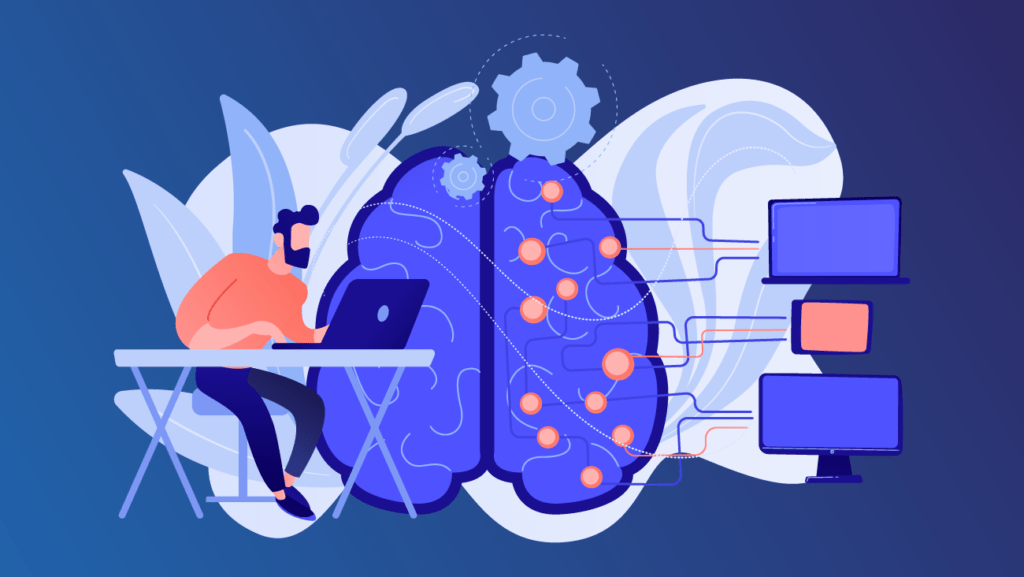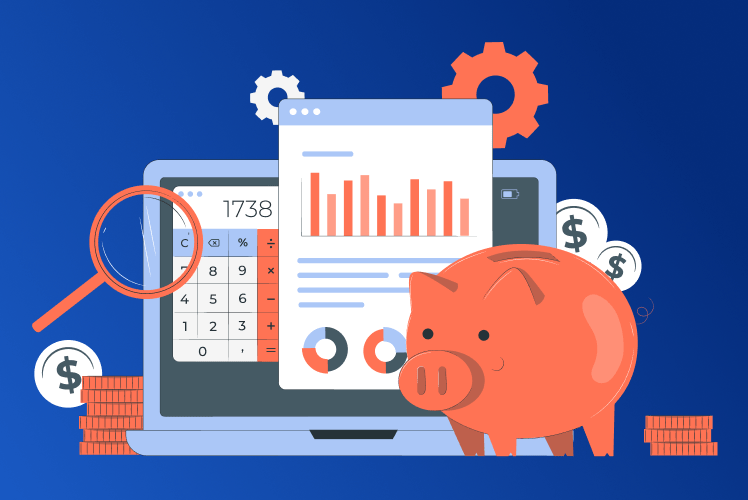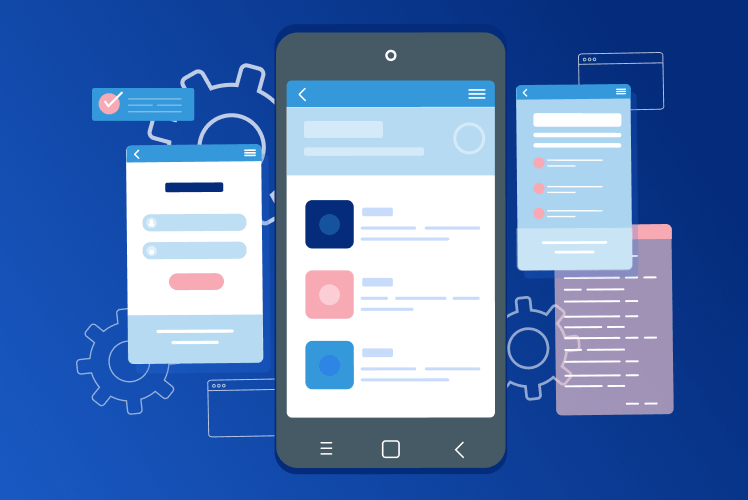Table of Contents
In recent years, data science has been one of the hottest tech topics to discuss. Companies began to realize the importance of data in decision making and there has been an acute need for knowledgeable professionals who work with data.
But despite its popularity, data science still remains a bit of a grey area. In this article, we aim to fix that and explain the basic data science concepts in a clear and understandable manner.

What is data science?
According to the official definition, data science is “an interdisciplinary field that uses scientific methods, processes, algorithms, and systems to extract knowledge and insights from many structural and unstructured data”.
But if you want a simpler definition, data science is basically the study of data. The main goal of data science is to gain valuable insights from the available data and for that, data scientists use a number of tools and techniques. In order to better understand the process, it’s worth having a look at the data science lifecycle – but first, let’s see how data science differs from business intelligence.
The difference between Business Intelligence and Data Science
Both data science and business intelligence are aimed at analyzing the data and presenting it in a format suitable for decision-making. However, there are several differences that set BI and data science aside.
Data science:
- Can be applied in any domain (business processes, customers behavior, healthcare, finance, etc);
- Uses both structured and unstructured data;
- Requires the use of statistics, machine learning, AI, Natural Language Processing;
- Places emphasis on analysis and extracting hidden/non-obvious dependencies in the data.
Business intelligence:
- Focus on analysis and assessment of business processes;
- Uses structured data;
- Requires the use of statistics and visualization;
- Places emphasis on analysis of past and present events.
As you can see, BI is most often used to analyze past and present events and draw conclusions based on them. Data Science can analyze historical data as well and, based on it, make assumptions and predictions about the future – in this way, it assists strategic planning. Data science also allows to make analysis using more sophisticated methods and it does not require the initial data to be clean, prepared, and to have a simple structure.
Both BI and data science are important for a business. You can successfully combine both or first start with business intelligence and then gradually move to data science.
Data science lifecycle
A data science lifecycle is an end-to-end process of data discovery and further analysis. It consists of the following steps:
- Data discovery and collection
This is the first step in working with data. It implies data acquisition from various sources, both internal and external. These sources can include logs, data from social media, reports, surveys, audio/video recordings, etc.
- Preparation
The collected data usually comes in the raw and unstructured format: it may have missing or wrong values, blank columns, incorrect formats. So in order for the data to be processed and analyzed, first it needs to be prepared.
- Model planning
At this stage, you will need to determine what algorithms, methods, and techniques you’ll use to draw the relationships between the needed variables.
- Model building
During this stage, data scientists usually distribute data sets for training so that the model gives accurate results later on. There are different techniques that you might apply for training and they include clustering, classification, and association.
- Operationalize
Once the model is tested, you can present final reports, code, and documentation to the parties involved. At this stage, the data model is deployed into a production environment but only after a very thorough testing process.
- Present results
The whole idea of data science is to receive valuable insights – so at this stage, you will present the obtained results to stakeholders. The obtained results should help you answer your questions and understand what actions you might need to take.
When talking about data processing, it is important to understand the ETL and ELT concepts as you’ll have to choose between them.
ETL
The ETL approach is a traditional one and is most commonly used when it comes to data processing. It stands for Extract-Transform-Load. That means, first the data is extracted, then transformed (blank fields and values removed, the format is unified, etc.), and then is finally loaded into the data warehouse.
This approach has numerous advantages:
- Adherence to data compliance and security regulations since the data is prepared thoroughly.
- High data accuracy due to preliminary transformation before processing and analyzing.
- Efficient management of large datasets.
However, since the processing capabilities of data warehouses grew significantly in the last couple of years, a new approach to data processing appeared. It is called ELT and is slightly different from the ETL one.
ELT
In order to speed up the data processing, companies switched to the Extract-Load-Transform approach and this is what ELT stands for.
Unlike ETL, ELT stands for Extract-Load-Transform. That means that the data transformation process occurs right in the data warehouse. In this way, the data warehouse can store both structured and unstructured data.
While the ELT approach is faster and the data is ingested rapidly, the lack of preliminary data processing leads to data inaccuracy and inconsistency. This, in turn, severely impacts data quality and security.
Considering these risks, companies started to adopt a brand new approach which is a mix of both ETL and ELT. This new method of data management is called ETLT and stands for Extract-Transform-Load-Transform. That means the data is slightly processed before being loaded into the data warehouse and most of the data processing happens there after the load. In this way, the data is ingested faster than with the ETL approach but turns out to be more accurate than with the ELT one.
Data science benefits for business
The biggest advantage that data science brings to companies is the ability to make accurate decisions regarding the company’s development and growth. But we think the data science benefits deserve a more detailed explanation.
A better understanding of internal and external processes
Any company owner would like to know exactly what’s going on in the company and outside of it. By applying data science, one can detect the hidden patterns and dependencies and better understand why certain things and events occur and how they are related. Thus, if you have an ongoing issue or want to learn more about the impact of external processes on the internal ones, data can greatly help you.
Ability to see areas for improvement
Data science answers a lot of questions, such as “Why are certain things happening?”. Thus, if you wish to improve certain areas of your business, you can define the right question and apply the data to answer it. For example, if you own a hotel and regularly experience a significant visitors drop at a certain time, you can analyze the data and see what events can cause it. Based on that, you can come up with a plan on how to improve the situation and how the obtained insights can help you with that.
Understanding of customers and their behavior
Customers are at the core of any business so it’s vital to understand their behavior and preferences. And the best way to do so is to analyze their actions and personal information.
By applying data science, organizations can get detailed profiles of their customers and a deep understanding of the motives behind their actions, factors that impact buying decisions, and much more. This will lead to a significant increase in customer loyalty and sales and is a total win-win situation for both parties.
Ability to identify opportunities and risks
Again, by understanding how certain events and actions impact past and current situations, a company can better understand how to manipulate these actions to mitigate and/or avoid risks and identify new opportunities. Needless to say, such knowledge is highly valuable for further company growth and development.
Data Scientist job explained
Now that you know about the benefits that data science brings to an organization, you’d probably want to know how to actually implement it. For that, you’ll need a data scientist.
A data scientist is a person responsible for gaining insights from your data. It involves multiple steps, from data acquisition to data processing and presentation of obtained results. Thus, the responsibilities of a data scientist are:
- Asking the right questions in order to set the right goals;
- Solving business problems with the help of data;
- Collecting the data and transforming it into the desired format;
- Processing and cleaning the data;
- Conducting Exploratory data analysis;
- Making a choice of a data model and its further implementation;
- Application of data science techniques (i.e. machine learning, statistical modeling);
- Measuring the accuracy of the result;
- Presentation of results to stakeholders by using data visualization tools.
As you see, a data scientist is a valuable professional who has a thorough understanding of multiple subjects, including programming languages and statistics. Without a data scientist, it will be impossible to process and analyze your data so this role is very important.
Do you really need a data scientist?
Data science can bring your business amazing benefits and you’d probably want to jump in and hire a data scientist immediately. However, there are certain considerations to keep in mind before implementing data science into your company.
First, the quality and amount of your available data. It may happen that you do not have enough data to use for machine learning training or that available data is of insufficient quality. In this case, you may need to come up with an alternative method of data collection and to think about a suitable data processing tool.
Second, despite the popularity of the data scientist job, there are not many candidates out there who think and work like actual scientists. So if you combine data of poor quality with a non-professional specialist, you’ll end up losing money and time.
If you consider implementing data science in your organization, double-check whether you have enough data of sufficient quality and invest some time into finding a knowledgeable professional. As well, it might be a good idea to find a company that offers professional data science services. In this case, you will receive a high level of expertise and knowledge at an affordable price if compared to hiring an in-house team of specialists while taking on a lot fewer risks.
Summing up
Data science is a very vast field that is impossible to cover in one article. We hope our explanation of its basic concepts helped you better understand the nature of data science, its role in modern business, and the requirements for data scientists. Don’t forget that before implementing a new method, it is vital to do thorough research and groundwork so that any current issues will not slow you down in the future.



Comments